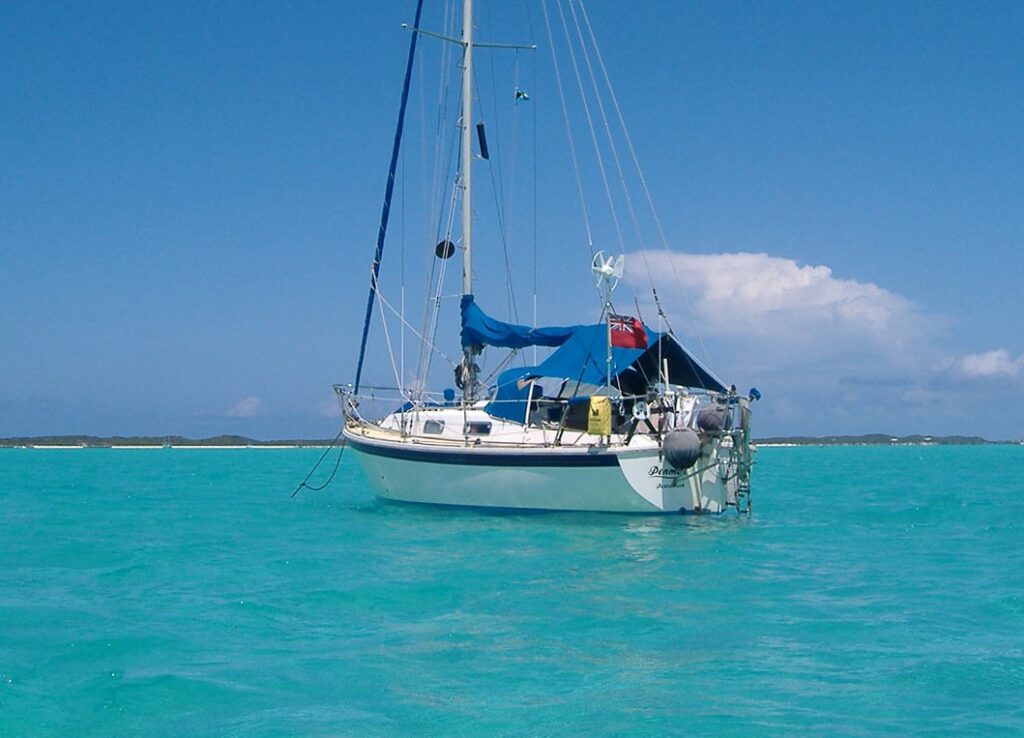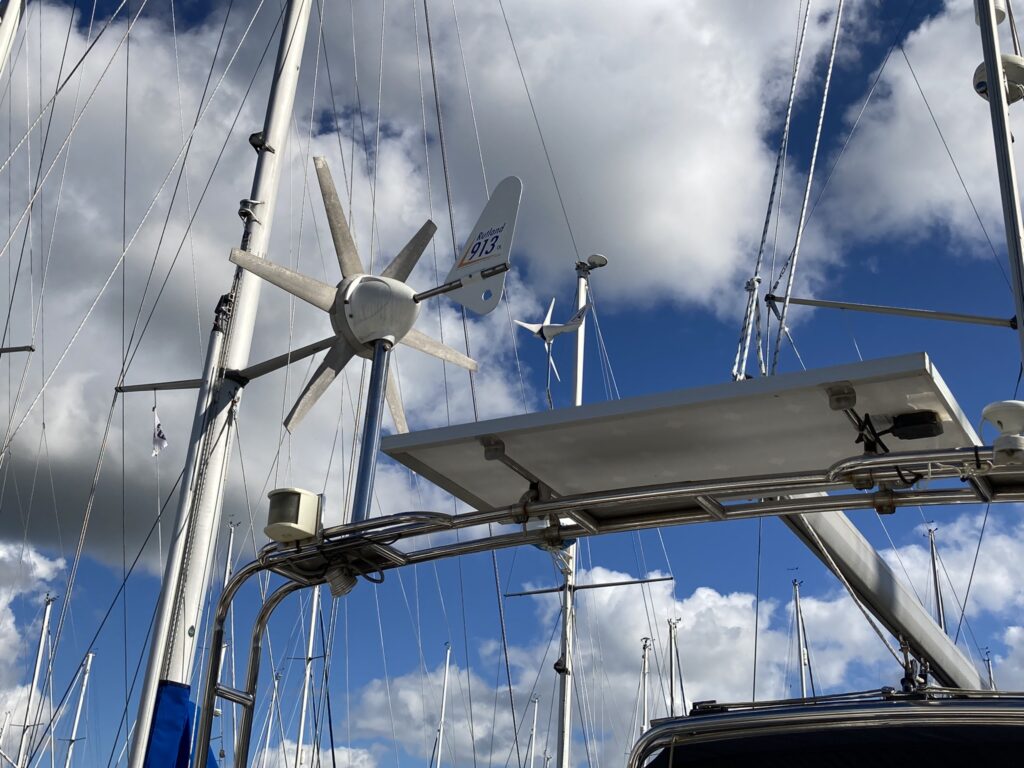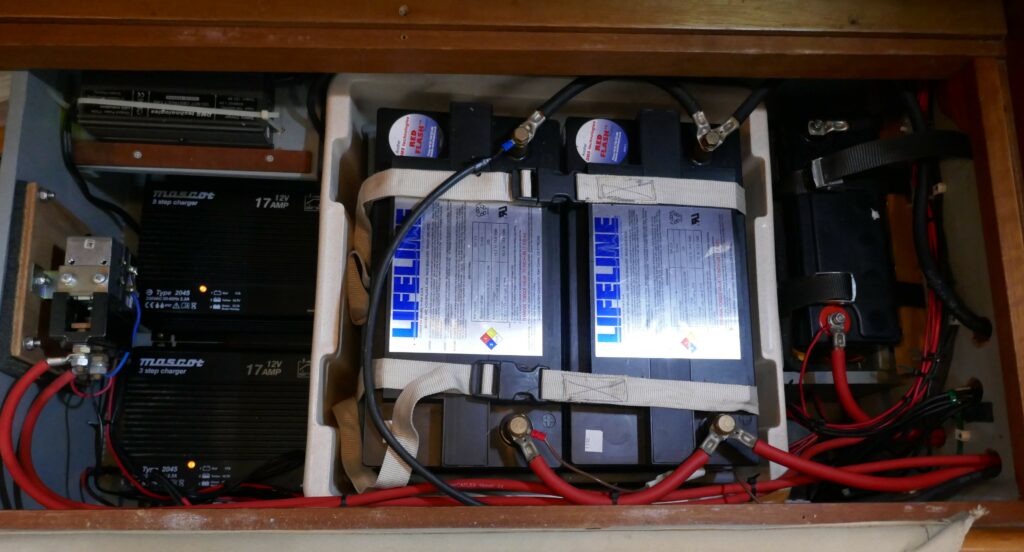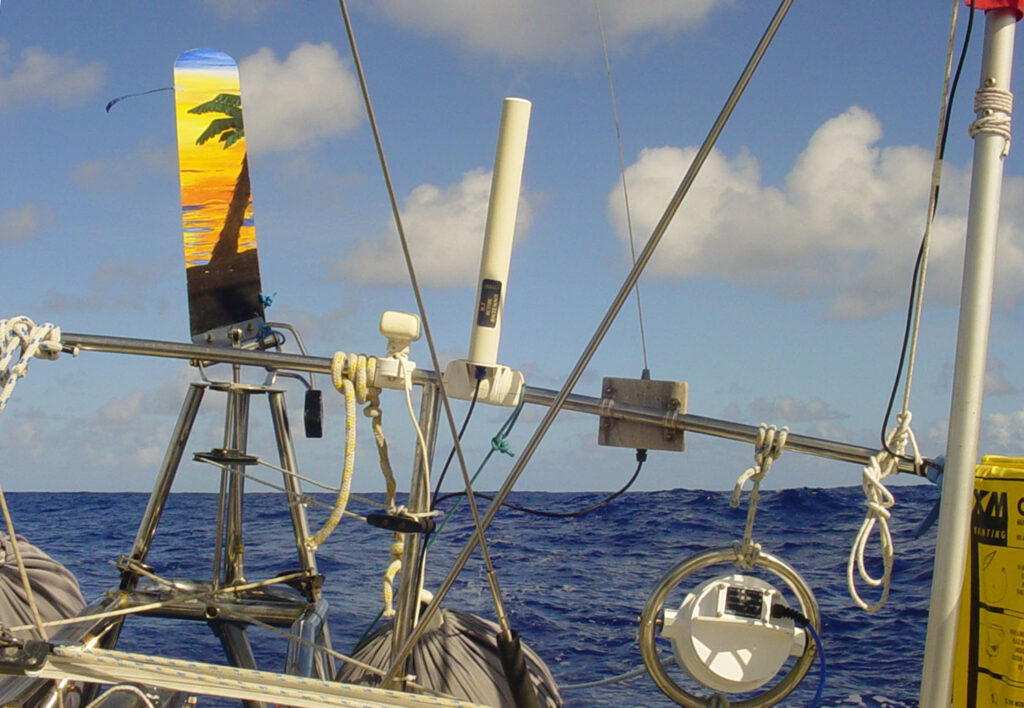There can’t be many activities tougher than cruising a sailing boat when it comes to testing battery longevity and efficiency.
Away from the convenience of a modern marina, where batteries can be charged via a shore power cable and onboard battery charger(s), the primary means of charging batteries is by running the yacht’s engine and charging via its alternator. Modern yachts are normally equipped with efficient marine diesel engines and these are usually used routinely for departing from and arrival in harbours as well as in windless conditions at sea.
A secondary means of charging is possible and indeed recommended. During long periods at anchor and extended passages at sea, battery charging by engine alone may not be practical due to limited fuel carrying capacity and, furthermore, operating a marine diesel under minimal load can result in excessive engine wear. The most popular alternatives often seen on yachts fitted out for more serious passage making are wind generators, solar (photovoltaic or PV) panels or a towed water generator, or any combination of the three.
Owners need to assess battery requirements and manage consumption very carefully. A properly planned 12-volt (or 24-volt) battery installation is imperative – around 80-90% of lead batteries manufactured these days are AGM, but they vary and the correct choice is vital. ‘Deep Cycling’ AGM batteries, which are specifically designed for discharging and recharging, will give many ‘cycles’ over many years provided they are not frequently discharged below say 50% of their capacity. A dedicated engine starting battery is a different beast and designed to produce a high burst of power for a short time and it follows that a combination of the two types is the recommended set up for a sailing boat with an auxiliary engine.
A charging system which prioritises charging of the engine starting battery is sensible. This battery will have relatively low capacity and can be topped up before recharging the domestic batteries. A battery monitor is a useful instrument, enabling a high degree of visibility and control over consumption.
In calculating consumption, there are many factors to take into account. For example, a fridge operating 24 hours a day and/or perhaps a radar or short- wave radio transmitter on board will increase consumption markedly. A boat underway overnight with all instruments and navigation lights in use will use a lot of amps, whilst a boat at anchor with the crew asleep and just an anchor light glowing from the masthead will consume very little. The permutations are endless, but a detailed analysis and experience should establish a maximum power consumption or ‘draw’.
We reckon on a maximum draw, when we are on passage including nights at sea, of around 175 ampere hours per 24 hour period, but this doesn’t include equipment such as a radar, water maker or short-wave radio. These could easily add up to a further 50 ampere hours draw making a total of 225 amp hours. This is a rough estimate based on our experience and far more detailed information can be found online.
Spirit of Penmar, a Westerly Sealord, is equipped with a 35HP diesel engine providing a maximum 65 amp charge via its alternator. We have a wind charger capable of delivering 35 amps in a gale but averaging say 4 to 7 amps in a moderate wind. Also, we have a small flexible solar panel capable of producing a maximum 4 amp charge … when the sun shines!
We have two separate battery banks fitted, comprising:
- A Red Flash 1100 with a small capacity of 43 Ah (12V), which cranks out a very high current (around 500 amps) for a short time, for starting the engine
- Four deep cycling 105 Amp hour (Ah) Lifeline batteries wired in parallel, in total 420 Ah (12V) for the domestic requirements – effectively everything on board other than engine starting
The system was designed so that in an emergency the systems could be switched in parallel together to start the engine, making temporary use of the domestic battery capacity. All five are sealed lead acid AGM (Absorbent Glass Mat) and are tried and tested high quality batteries. We had a similar set up on our previous boat, a Westerly Konsort, Penmar.
- Why AGM batteries? Well, we are no experts but the key reasons we would recommend AGM deep cycling batteries for marine application are as follows:
- AGM batteries are sealed and maintenance free and do not therefore spill fluids. Gel batteries, on the other hand, are not completely sealed and over their life will vent small amounts of hydrogen into the atmosphere
- Deep cycling AGM batteries are tolerant of being repeatedly discharged to a certain extent, which is critical for longevity on sailing boats where battery drain is not always immediately matched by recharging opportunities.
- They can quite happily operate in a partial state of charge for a considerable time. Eventually it will be necessary to fully recharge the battery so that all the cells are ‘balanced’ to reach their full potential.
- They can be mounted in most orientations, provided of course they are properly secured.
- They are tolerant of ‘bouncy’ motion and vibration … essential in a sea going environment!
On the other hand:
- Deep cycling AGM batteries can be more expensive than standard AGMs, but as with most things in life, you get what you pay for.
- Battery chargers always have to be compatible with the type of battery being charged and a three-stage voltage regulated charger is vital for deep cycling AGMs, which can be more expensive, though now regarded as industry standard. A cheaper charger with no voltage regulation, if left on for 2-3 days will overcharge and damage the battery and are not suitable for marine use.
- If fully discharged and left in that state, deep cycling AGMs can be damaged. Because of the limited electrolyte left in the battery, high resistance can occur and it may be impossible to recharge. If partially or fully charged immediately after a complete discharge, however, they stand a better chance of recovery than other types.
We have recently replaced our entire battery bank following nearly 11 years of use, including an Atlantic circuit, ocean crossings and a high proportion of time at anchor. The used batteries were returned to DMS technologies where lab testing showed that, after 11 years use, all batteries were showing signs of wear but were still averaging around 80% of their original factory capacity. This is quite remarkable and well exceeded our original expectations. We attribute this performance to the following:
1. Smart voltage regulated shore power (240-volt AC/12-volt DC chargers were fitted, which are designed not only to charge the batteries but continue to trickle charge them to bring all the cells into balance. If this type of charging is not carried out the weakest cell in the battery will never reach full charge and battery life will be compromised.
2. Although Spirit of Penmar has a lot of electronic gear, she also carries a wind generator, a solar panel and, for long sea passages, a towing water generator so that every opportunity was used to charge the batteries.
3. Carrying 420 Ah capacity for the domestic load meant that there was a much larger reservoir of battery power than is normally fitted to a sailing yacht. This meant that the batteries were less likely to be completely drained, which would make them more difficult to recharge and could ultimately reduce the capacity.
4. Upgrading to modern lower consumption instruments and LED lighting has decreased power consumption markedly.
In years past, yacht manufacturers and owners have tended to view batteries as a short life throw away item. However, with modern battery technology this no longer needs to be the case.








